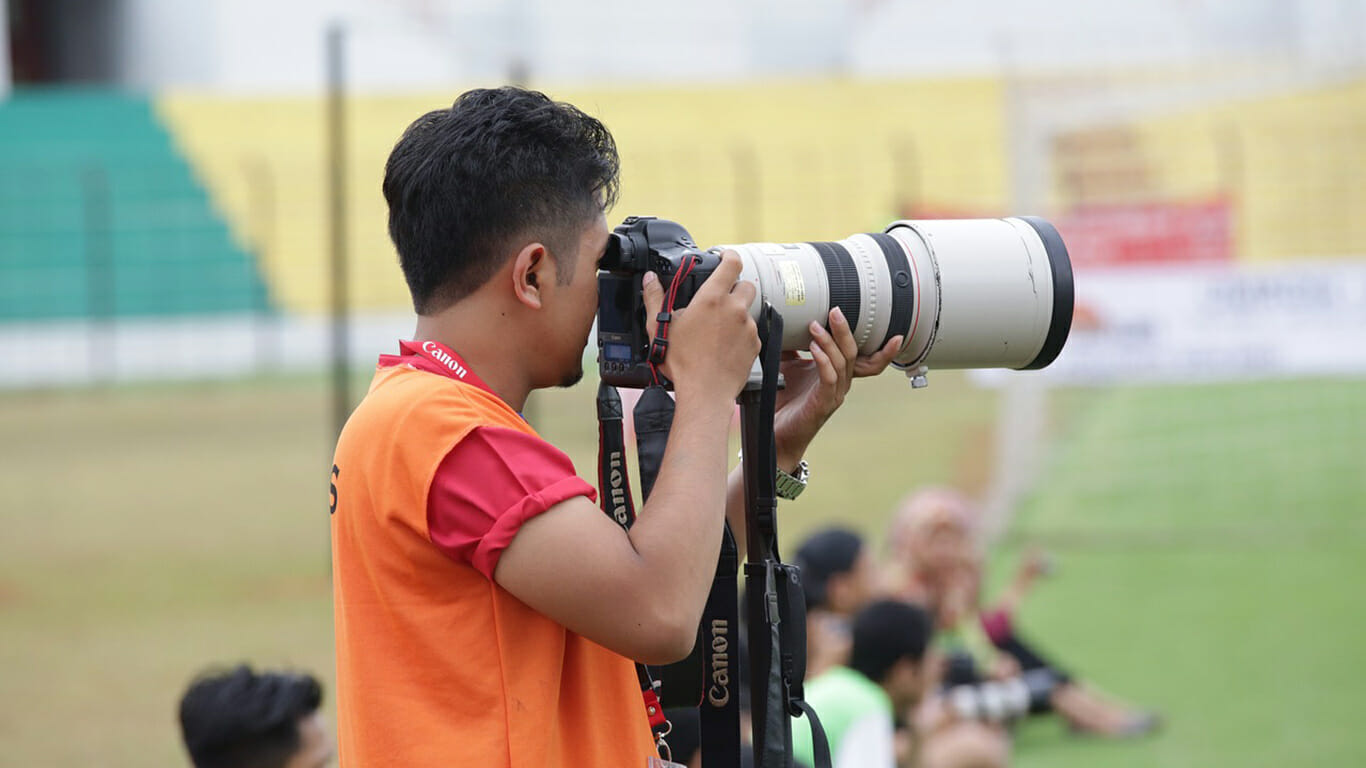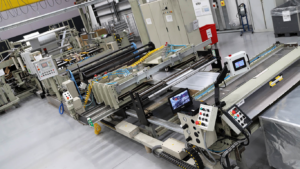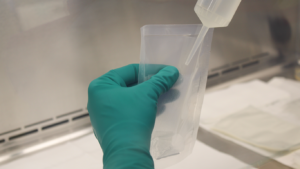Sports photography is a special genre, which has peculiarities. To get really interesting shots, you need to know as much as possible about the chosen type of competition. This will affect the choice of shooting point, camera settings, and optimal characteristics of the equipment.
Many nuances can be corrected at the stage of post-processing. For example, if the photo does not convey the aesthetics of the sports body, it will be possible to add more embossed abs photo editor RetouchMe.
Beginners often choose soccer for photography — almost everyone is familiar with the sport, and matches are held regularly.
Preparing for the shoot
Choose in advance the match you want to attend and get permission from the administration to shoot. This will help to avoid unpleasant communication with security. For good photos, you do not need to wait for a big game between famous teams, go to any amateur match. Even then, the shots will not go unnoticed — players, coaches, and referees will want to see the results of your work.
Arrive at the stadium in advance to familiarize yourself with the surroundings, identify suitable points for shooting, assess the lighting, and take a few interesting shots before the game starts.
Where should the photographer stand?
The optimal place to shoot depends largely on the photographer’s goals. If you want to take emotional, almost portrait-like shots of the players at full height, it’s best to stand on the long side of the field, closer to the goal rather than in the middle. This gives you four available vantage points. This way you can capture the dynamic battle for the ball. Choose a side where the sun will not shine into your lens. The area in front of the goal of the less powerful team will also be suitable — there will be more thrilling moments.
Given that the ball is mostly on the ground and the attention of players is entirely focused on it, it is better to shoot from the knee, not from the shoulder. So the figures of soccer players will look more proportional and dramatic. To reduce the load on your hands and knees, it is recommended to buy a stable monopod that can support the weight of the camera and lens.
What technique to use?
- Camera. The best option will be cameras with high autofocus speed — at least 7–8 frames per second. Options of 7–10 or 10–12 frames per second will also work. The matrix should give a minimum noise level at higher ISO values (it will have to be “cranked out” in poor natural light). It is obligatory to have a continuous shooting mode.
- Lens. The best solution will be a lens with an adjustable focal length of 100–400 mm. Small soccer grounds can be suitable for 70–200 mm. Zoom will allow you to quickly rebuild and catch the most interesting moments. See that the model gives good sharpness and has fast focusing. As additional lenses, you can take 24/28–105 mm and 14/16–35 mm. They will allow you to shoot from a short distance, for example, to take a group photo of the team or a shot of an emotional fan.
- Memory card. Choose the fastest model with a large capacity, as continuous shooting requires a high recording speed and quickly “eats up” free space.
Settings and other recommendations
- Shoot in aperture priority (AV) or manual mode (ISO AUTO, shutter speed 1/1000, aperture at maximum).
- Focusing on the center point in Servo mode will be optimal.
- RAW is the preferred option for saving sources. It allows you to perform complex post-processing and can be easily converted to any other format. JPG should be chosen only as a last resort.
- Be sure to carry one or two spare batteries, as continuous shooting quickly depletes the battery.
- The photographer’s bag should always have a protective case for the camera in case of bad weather.
These simple tips will allow even a beginner to get beautiful and spectacular shots!




